![]() a community development promoter
a community development promoter
 JP | EN
JP | EN
 JP | EN
JP | EN
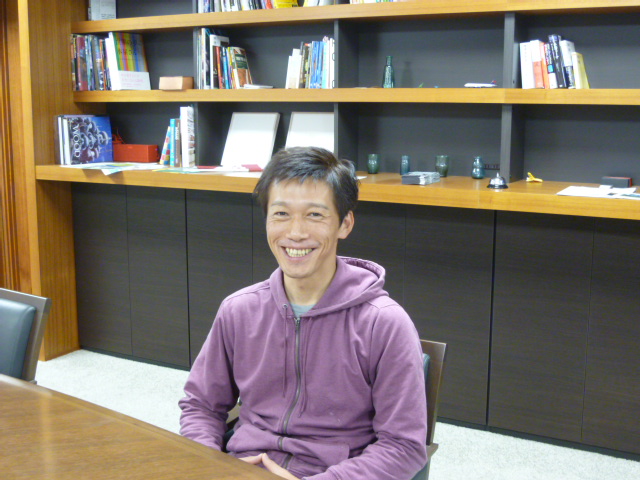
I made the assumption that the construction industry destroys nature, or it is opposed to nature. So, I expected one of my three younger brothers to take over our family's construction firm.
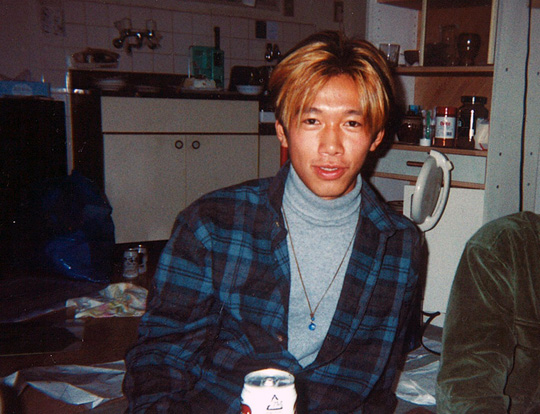 Photo:Mr. Murakami as a college student. He had dyed blond hair, adhering to his principle of openly displaying his need for attention at the time.
Photo:Mr. Murakami as a college student. He had dyed blond hair, adhering to his principle of openly displaying his need for attention at the time.I felt tremors in Kyoto. TV news programs reported on seismic intensities in the areas of Kyoto and Osaka, but I couldn't find any reports on Kobe. Later, I learned that Kobe was the epicenter. The next day, I went to Kobe on my motorcycle. Just after I crossed the Muko River in Nishinomiya City on my way, the scenery was completely different. I couldn't believe my eyes because everything had been destroyed.
On Port Island, Kobe, where my family lived at the time, roads were covered with 20-centimeter-thick mud from soil liquefaction. Our construction firm received numerous requests from neighboring residents to check or repair their houses. I drove the company's staff members to their customers on my motorcycle.
I was very sad to see that my beautiful hometown of Kobe had been devastated by the earthquake. Meanwhile, I changed my attitude about the construction industry, which I had previously regarded as destroying nature. I became aware that it works with communities while protecting nature, and thus offers support to people.
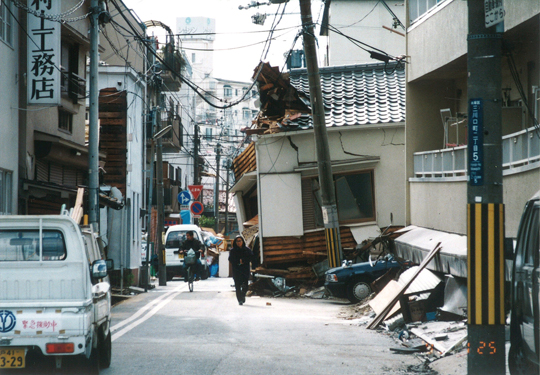 Photo:A street outside Murakami General Construction right after the earthquake. Mr. Murakami did volunteer work throughout Kobe.
Photo:A street outside Murakami General Construction right after the earthquake. Mr. Murakami did volunteer work throughout Kobe.I'm sure I wanted to do something for Kobe at the time of the Great Hanshin-Awaji Earthquake. But I doubt if I actually did anything.
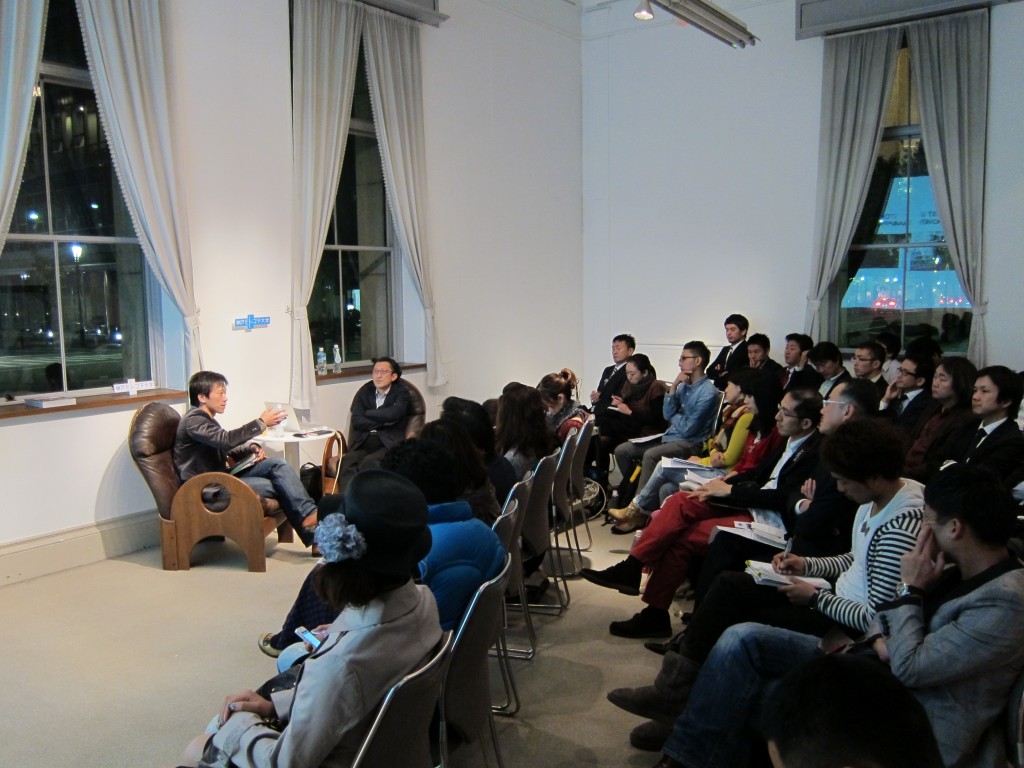 Photo:Teachers from different walks of life give lectures at each class.
Photo:Teachers from different walks of life give lectures at each class.With a population of about 1.5 million, Kobe has a suitable size for residents to cooperate with each other. But the city seemed fragmented, lacking the feeling of togetherness. In contrast, Portland in the U.S. has a population of some 600,000 and is known as a good example of a compact city, with a good mix of abundant nature and urban functions. Residents of Portland share a vision of producing rather than consuming.
Residents of Kobe must be of the same view as Portlanders, but haven't voiced their opinions due to limited opportunities to interact with each other. So I think the first step to liven up the local community to the fullest is to build "friend-of-a-friend" relationships among residents.
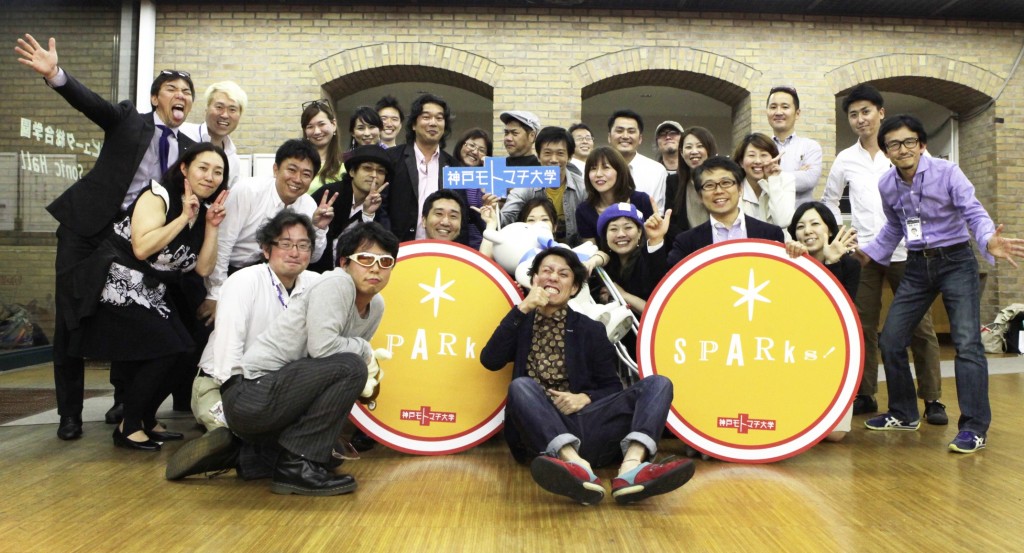 Photo:All staff members are volunteers. They prepare for classes by communicating with each other via Facebook and other means.
Photo:All staff members are volunteers. They prepare for classes by communicating with each other via Facebook and other means.In terms of the project's purpose of creating ties among people, the ideal size of a class is around 30 students. Also, since it is vital to establish new relationships, teachers are those who we don't know or who are from fields not related to ours. We find people who don't have previous connections with us.
For example, because of my job, I know quite a lot of people who are self-employed or who are involved in community development. But we only have tenuous links with those who work at large companies in Kobe, or researchers belonging to research institutes, or persons involved in public administration. By inviting these people to give lectures, we can establish ties with them.
 Photo:Mr. Tatsuya Oshika from Suma Aqualife Park Kobe delivers a short presentation about a concept of aquatic museums at the fifth "Spark!" session.
Photo:Mr. Tatsuya Oshika from Suma Aqualife Park Kobe delivers a short presentation about a concept of aquatic museums at the fifth "Spark!" session.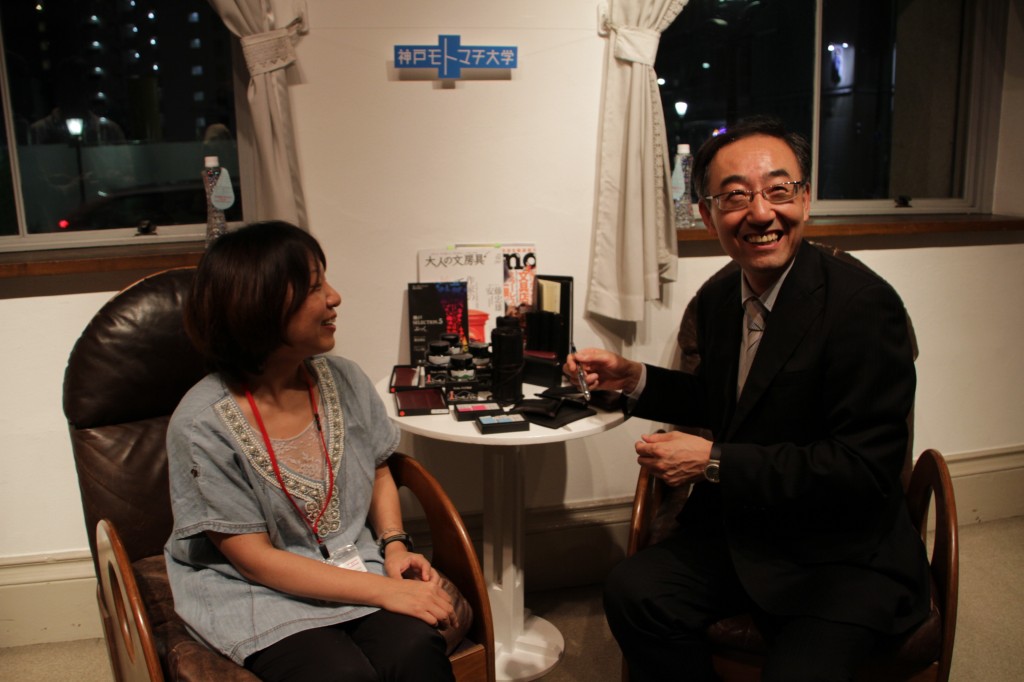 Photo:Mr. Naoyuki Takeuchi is involved in product planning at Nagasawa Stationery Center, a stationery company that has been in business for 130 years.
Photo:Mr. Naoyuki Takeuchi is involved in product planning at Nagasawa Stationery Center, a stationery company that has been in business for 130 years.During the past four years, I realized a lot of things. To cite an example, I find it interesting that a lot of people look at it in a positive light that Kobe is a quiet city. Community development is usually associated with enlivenment, which you can see in Shibuya in Tokyo, or Shanghai, to take an example from abroad. Kobe is no match for these cities in exhilaration. But people's favorable view of quiet Kobe reminded me of a good aspect of Kobe.
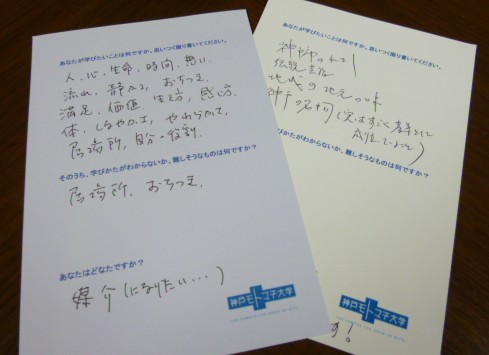 Photo:Participants write on these cards their opinions and what sort of classes they would like to attend.
Photo:Participants write on these cards their opinions and what sort of classes they would like to attend.In the city of Kobe, there are surprisingly a lot of clocks that stopped at the moment the Great Hanshin-Awaji Earthquake struck, reading 5:46 am. That moment became the starting point for people in Kobe. They banded together because of the earthquake and have recovered from the disaster. For them, the earthquake is more than just a sad and painful event.
However, after the Great East Japan Earthquake hit the Tohoku region, I heard voices saying, "Tohoku shouldn't follow the example of Kobe," for the reason that "Kobe is going back to what it was before the earthquake in 1995, not trying to grow into a new Kobe." I thought that was only too true. In the event of a catastrophe like the one we had, people would lose their capacity to be open to new ideas, and thus give in to conservative views.
Kobe boasts an excellent living environment surrounded by the sea and mountains, while also being compact and beautiful. However, because of the lack of new industries, young people leave the city. So, I want to realize a better working environment also for young people in Kobe by fostering new businesses.
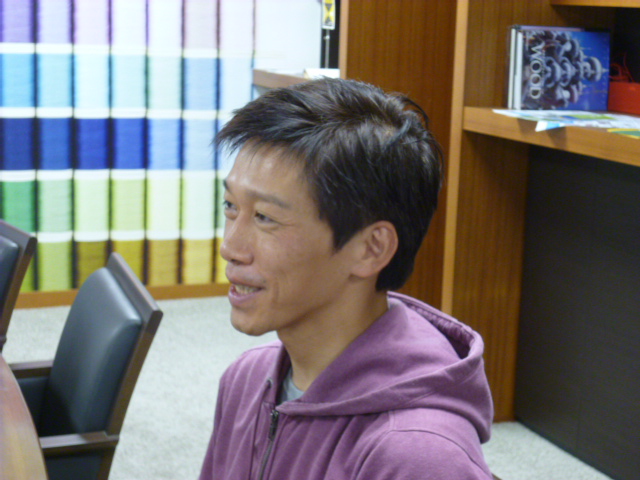 Photo:Mr. Murakami says, "I like beginning with small things in everything," while having an ambitious vision for the future.
Photo:Mr. Murakami says, "I like beginning with small things in everything," while having an ambitious vision for the future.Takehide Murakami
Takehide Murakami was born in Chuo Ward, Kobe City, in 1972. He was a 22-year-old college student living in Kyoto when the Great Hanshin-Awaji Earthquake struck in 1995. Having had his interest in town development piqued by the earthquake, he explored cities and towns around the country. When he set foot in the areas affected by the 2011 Great East Japan Earthquake, he felt a strong desire to take advantage of his acquired expertise to serve Kobe. His desire led to the establishment of “Kobe Motomachi University”, a community college that offers learning opportunities and creates links between people, with the aim of fulfilling the students’ potential.